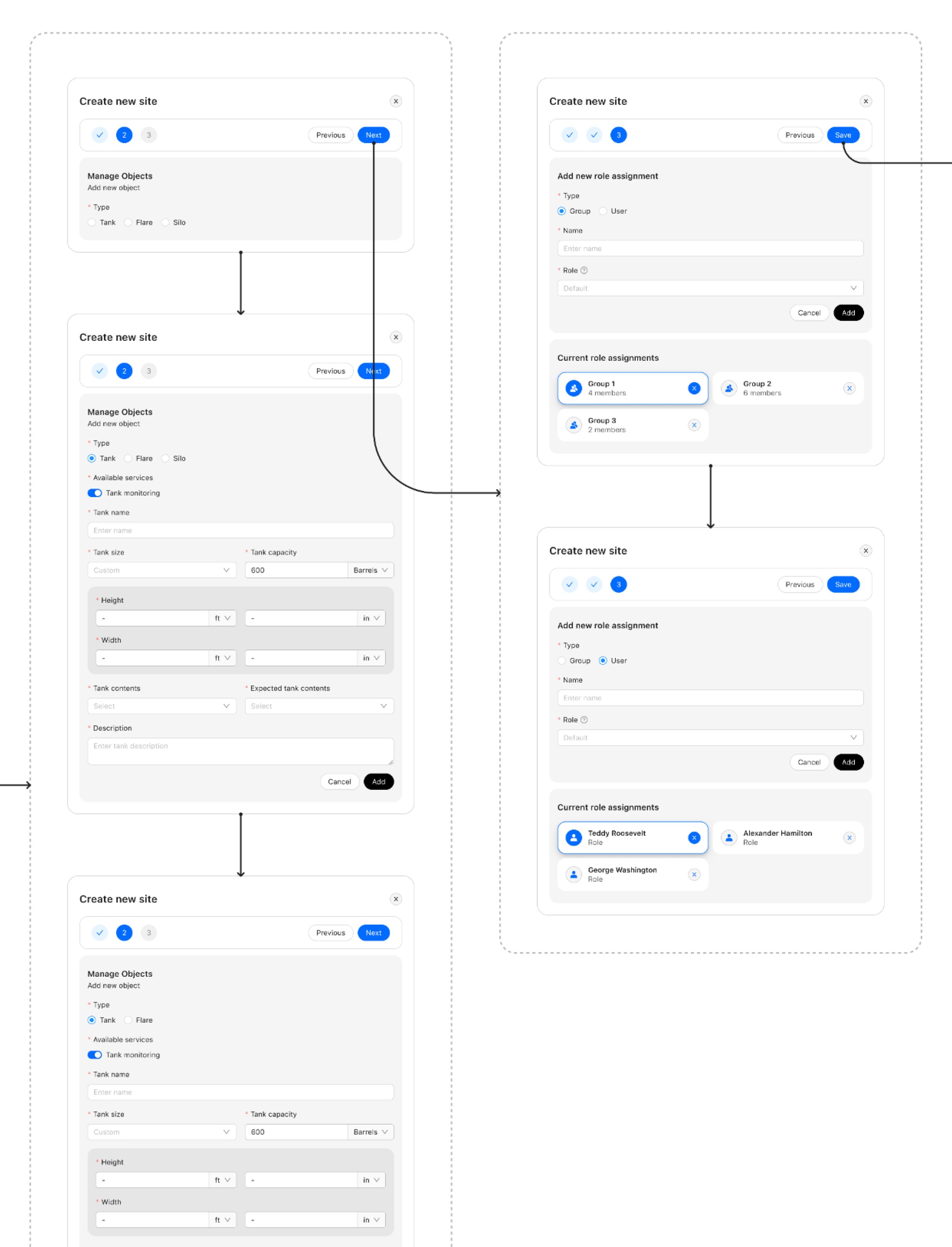
Andium Lead Product Designer
Redesigning Andium's iOS and web app ecosystem
At Andium, a startup specializing in IoT solutions for well-site operations, the existing iOS and web applications faced several challenges. The products’ user experience was overly complex with large gaps in access to relevant data, making it difficult for enterprise administrators and field technicians to navigate and utilize the tools effectively. Additionally, compliance standards required by oil and gas operators worldwide, required significant updates to the product’s design and functionality. The goal was to overhaul the design ecosystem to meet both regulatory and user needs while enabling scalability for future development. As the lead product designer, I was tasked with redesigning Andium’s entire design ecosystem for both iOS and web platforms.
-
Balancing intricate technical functionality with user-friendly design.
Tight deadlines to meet regulatory submission timelines.
A need for consistency across the iOS and web platforms.
-
Creating a user-centric interface that addressed the needs of two key user groups: enterprise administrators and field technicians.
Developing a scalable, flexible design system that could accommodate evolving requirements.
Supporting the company’s compliance with EPA Method 22 Reporting by delivering comprehensive flows and prototypes for certification submission.
Enhancing operational workflows to empower users and reduce dependence on the Andium back-end team.
iOS App Sites Landing Page
Web App Reports, Method 22 Dashboard
Action Point
User research and insights gathering
As lead product designer, I participated in customer interviews and usability studies with enterprise administrators and field technicians to identify pain points and opportunities for improvement. Together with my product manager we mapped user journeys to highlight inefficiencies and areas requiring simplification, such as alert management, creating sites and objects, timelines, and configuring user roles.





Action Point
Design system implementation
I introduced Figma as our primary design tool, training the team on how we woud effectively create and present designs internally, as well as to stakeholders and regulatory entities. To standardize UI elements and streamline rapid prototyping, I developed a custom Figma component library, designing hundreds of components to ensure consistency across files and reduce development time for new features. This approach also aligned with Apple’s Human Interface Guidelines, ensuring an intuitive and polished user experience on iOS devices.
Action Point
Prototyping and iterative design
I designed comprehensive flows and interactive prototypes that transformed complex technical functionality into simple, user-friendly interfaces. This included implementing a progress tracking feature using modals and in-page layouts, enabling users to independently create new sites, alerts, objects, and system users. I iterated on designs based on feedback from internal usability tests and stakeholder reviews to enhance performance and usability.
Action Point
Team collaboration and agile processes
I collaborated closely with product development and engineering teams to ensure the seamless integration of new designs into our products. Working within an agile design workflow, I was able to accommodate evolving requirements while maintaining scalability and consistency across the design system. I also prioritized clear communication by regularly sharing detailed design updates, which fostered transparency, encouraged cross-functional feedback, and strengthened collaboration between teams throughout the development process.
iOS App Rate ML Detection
Web App Admin Settings Devices
Looking Back
Success from my iOS and web app redesign: Intuitive UX and design system
The iOS and web app redesign resulted in significant enhancements to both user experience and operational efficiency. The updated interface empowered users to effortlessly navigate the platform and access critical data essential for managing their day-to-day operations, streamlining workflows and improving overall productivity.
-
Enterprise admins and field technicians reported a significant reduction in time spent on key tasks such as generating reports and navigating site timelines.
-
The bespoke component library reduced prototyping and production time by 50%, enabling faster feature rollouts.
-
Positive user feedback highlighted the simplicity and intuitiveness of the redesigned interfaces. iOS users increased their
-
Achieved EPA certification for Method 22 Reporting, reinforcing Andium’s compliance with methane emission regulations and strengthening its market position as a leader in monitoring and reporting.
Empowered users to manage their workflows independently, reducing reliance on Andium’s back-end team and allowing the company to focus on innovation.
Established a scalable design system that serves as a foundation for future growth and adaptability.
Up next
GoDaddy Product Design
Atlassian UX Design
Rubric x Squarespace UI/UX Design








